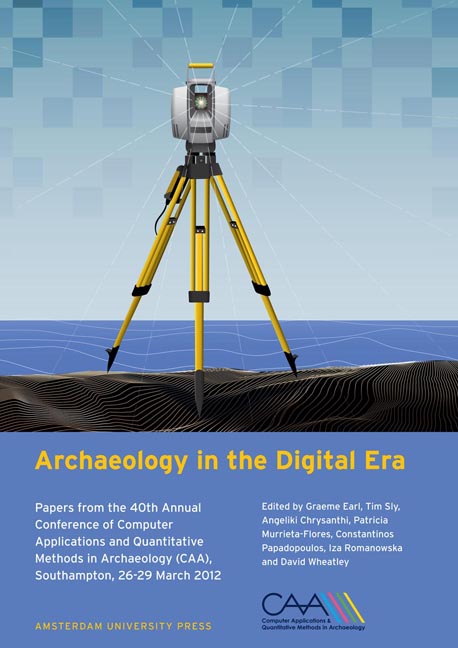 Archaeology in the Digital Era
Archaeology in the Digital Era The Evolution of Territorial Occupation: Exploratory Spatial Data Analysis. Uncertainty and Heterogeneity of Data in Archaeology
Published online by Cambridge University Press: 16 February 2021
Summary
Abstract:
The analysis of territorial changes over time raises many methodological questions. Despite a very frequent use of spatial analysis methods, few works underline their methodological shortcomings. This paper considers a comparison and discussion of exploratory statistical methods (notably Ripley's K function and its derivatives). It is worth noting three parameters in archaeological spatial analysis: scale, quality and quantity of input data. Archaeological data are intrinsically heterogeneous. Therefore, our approach proposes a multiscalar process integrating heterogeneous data. We describe a range of methods for the description and analysis of heterogeneous spatial point patterns in archaeology. These methods are described through the spatial analysis of neolithic sites in the South-East of the Paris Basin (France). We conclude by discussing the problems of the logical link between spatial pattern recognition and the archaeological process.
Keywords:
Settlement Changes, ESDA, Point Pattern, Ripley's K Function
Introduction
The study of the evolution of human siteoccupation is a common issue of current research programs in archaeology. Many studies seek to understand the settlement pattern over time using many inventories of occupied places (Poirier 2010 ; Gauthier et al. 2012 ; Nuninger et al. 2012). The main purposes of these studies are to observe spatial organizations, to identify any possible spatial patterns or particularities for each period of time and to put forth new theories. Archaeologists have long used methods for analyzing point patterns (Orton 2005) and produced indexes and maps of change between two chronological periods in order to compare them. The results contribute to raise the following questions: Is the space under scrutiny non-randomly organized? What are the visible spatial shapes? How do they evolve through time?
With the development of the use of Geographic Information Systems (GIS) in archaeology, the use of analytical methods and spatial statistics has become both easier and automated. The studies that rely on these methods are based on measurements of distances between points. These became commonplace in archaeology. The method most used is the analysis of the nearest neighbor analysis (Clark and Evans 1954, Hodder and Orton 1976, Fletcher 2008).
- Type
- Chapter
- Information
- Archaeology in the Digital EraPapers from the 40th Annual Conference of Computer Applications and Quantitative Methods in Archaeology (CAA), Southampton, 26-29 March 2012, pp. 457 - 469Publisher: Amsterdam University PressPrint publication year: 2014


